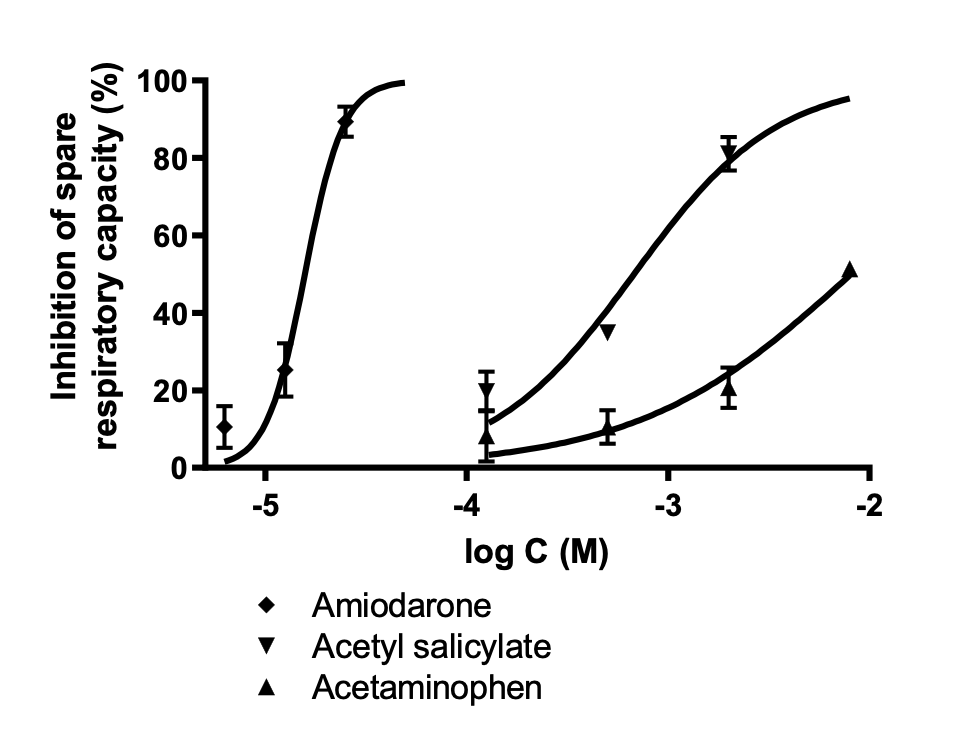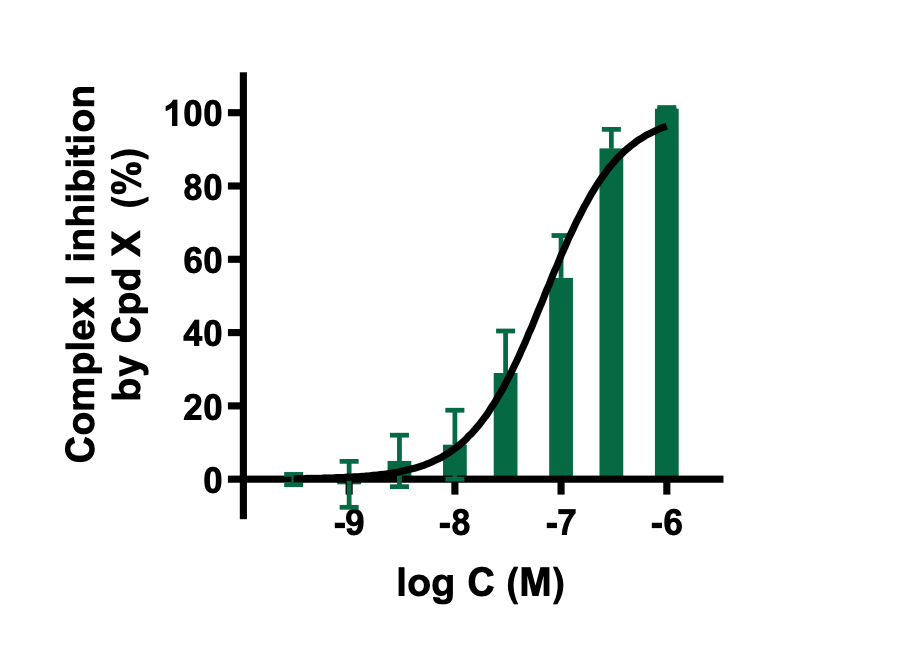Energy production: avoid power failure
Mitochondria are key actors in the cell’s metabolism as they produce most of the energy required to function, together with the glycolytic pathway. Mitologics’ technological platform MiToxView® offers robust and custom-designed assays to investigate in vitro mitochondrial toxicity by shedding light on energy metabolism in whole cells and energy production by mitochondria from various sources.
Mitochondria metabolise fuel through oxidative phosphorylation (OxPHOS) to generate energy in the form of ATP. Many metabolites can stimulate the respiratory chain, including fatty acids, glutamine, redox cofactors, and pyruvate – a byproduct of glycolysis.
In most healthy cells, oxidative phosphorylation represents the largest source of energy production. Consequently, if the respiratory chain is impaired, a metabolic imbalance will ensue. Various mitochondriotoxic compounds – therapeutic drugs, ingredients, or pollutants – have a direct impact on electron transfer chain complexes, or interfere with OxPHOS and FAO. These effects lead to organ toxicity in humans. For drugs such as fialuridine and panadiplon, this toxicity resulted in withdrawal of the molecules at advanced clinical phases. In the cases of alpidem and troglitazone, the compounds were withdrawn after marketing.
Investigate compound’s off-target mechanism by measuring respiratory chain complex activities.
Acute inhibition of respiratory chain complex I enzymatic activity (NADH ubiquinone oxidoreductase) by a chemical compound on isolated mouse liver mitochondria. The enzymatic activity of each respiratory chain complexes (CI to CV) are measured by spectrophotometry in 96-well plate.
Our platform provides consolidated data to help you to:
- Investigate compounds’ mitochondrial toxicity and any metabolic imbalance by measuring oxygen consumption (OCR), glycolysis (ECAR) and ATP production rate in whole cells using Seahorse XFe-96,
- Study the direct effects of your compounds on mitochondrial respiratory chain functionality (oxygen consumption driven by complex I, complex II, or fatty acids beta-oxidation (mtFAO); enzymatic activity of respiratory chain complexes I-V) in cells and isolated mitochondria,
- Screen and rank compounds based on their mitochondrial effects,
- Analyse biomarkers of mitochondrial dysfunction – respiratory chain complex activities and mitochondrial mass for example – in pre-clinical and clinical biological samples.



